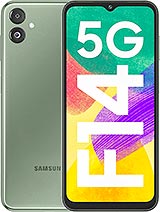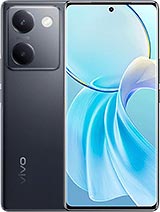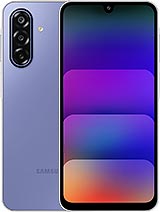Samsung Galaxy F14 alternatives
Tap above to see alternatives.
Vivo Y300 Plus alternatives
Tap above to see alternatives.
Samsung Galaxy F14

Samsung Galaxy F14
-
Exynos 1330
5 nm
-
6000 mAh
25W
-
6.6"
1080x2408 pixels
-
50 MP
1080p@30fps
- Specs
Vivo Y300 Plus

Vivo Y300 Plus
-
Snapdragon 695
6 nm
-
5000 mAh
44W
-
6.78"
1080 x 2400 pixels
-
50 MP
1080p@30fps
-
Specs

2x2.4 GHz Cortex-A78
6x2.0 GHz Cortex-A55
2x2.2 GHz Kryo 660 Gold
6x1.8 GHz Kryo 660 Silver
6GB 128GB (UFS 2.2)
f/1.8, (wide), PDAF
2 MP
f/2.4, (macro)
f/1.8, (wide), PDAF
2 MP
f/2.4, (depth)
f/2.0, (wide)
f/2.5, (wide)
SIM1: Nano, SIM2: Nano
SIM1: Nano, SIM2: Nano
13 5G bands
n1, n3, n5, n7, n8, n20, n28, n38, n40, n41, n66, n77, n78
6 5G bands
n1, n3, n5, n8, n77, n78
In this performance comparison, the Vivo Y300 Plus with its Qualcomm Snapdragon 695 (6nm) performs better than the Samsung Galaxy F14 with the Exynos 1330 (5nm), thanks to superior chipset efficiency.
Vivo Y300 Plus launched with Android 14 and will receive updates until Android 16, whereas Samsung Galaxy F14 launched with Android 13 and will get Android 15. Both phones are expected to receive security updates until around 2027.
Vivo Y300 Plus features a superior AMOLED display, while Samsung Galaxy F14 comes with an LCD panel. In terms of smoothness, Vivo Y300 Plus offers a higher 120 Hz refresh rate, ensuring fluid scrolling and animations. Both devices deliver the same brightness level at nits. Both phones have the same screen resolution.
Samsung Galaxy F14 comes with a larger 6000 mAh battery, which may offer longer usage on a single charge. Vivo Y300 Plus also supports faster wired charging at 44W, compared to 25W on Samsung Galaxy F14.
Vivo Y300 Plus includes an IP54 rating, while Samsung Galaxy F14 lacks an official IP rating.
¹ Scores can vary even with the same chipset due to RAM, thermals, and software optimization.










